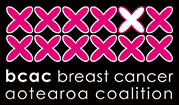BCAC Secretary Fay Sowerby says a presentation on proteomics was one of the highlights of the San Antonio Breast Cancer Symposium. Tao Liu, from Pacific Western University described advanced enabling technologies for cancer proteomics developed to be efficient and replicable to handle bulk proteomics workflow typically handling 10,000 proteins and greater than 30,000 phosphorites utilising mass spectronomy.
Proteomics can more precisely identify the phenotype of individual tumours and then using machine learning go on to reveal therapeutic targets. Nanopots allow for single cell typing. They then add to this BASIL to achieve higher coverage and greater throughput.
Mutation mapping then allows differentiation of the plasma cell population. This process captures the heterogeneity of plasma cells. So you can do bulk analysis and then single cell analysis. This allows for deep single cell analysis. This analysis can then be transferred to the clinic through targeted proteomics. A method called quantisation significantly increases precision. Targeted mass spectronomy with stable isotope peptide Standards is seen as an alternative to antibodies.
Then Dr Michael Gillette from the Broad Institute spoke about clinical translation with proteomics providing a powerful, reproducible and complementary approach to characterising breast cancer biology, exploring mechanisms of resistance and identifying potential therapeutic vulnerabilities. For example this work suggests:
- A ER+ subtype that would benefit from PDL-1binhibitors.
- Acetylene profiling also provides novel insights into epigenetic regulation of BRCA tumours via H2B acetylation and the metabolic repositories of BRCA subtypes.
- They have also identified NEK9 and MAP2K4 may play roles in resistance to P13 inhibition in TNBCs.
- Integrative proteomics and forward genetics also reveals a novel militia vulnerability in TNBC, and
- Proteomics classification of HER2 tumours indicates that patients are frequently misclassified as HER2+ impacting patient treatment, outcomes and costs.
Dr Matthew Ellis then spoke about proteomics and clinical translation. He described the pre-analytical issue that frequently exists with sample size and quality. They have therefore developed a robust protocol to extract DNA and protein from the same blood sample for genomics (WGS) and (WXS), alongside RNA sequencing while capturing a reserved sample for targeted proteomics or affinity enrichment from a single core needle biopsy.
This work is expected to hit the clinic in 3-5 years.
– 13 December 2019



